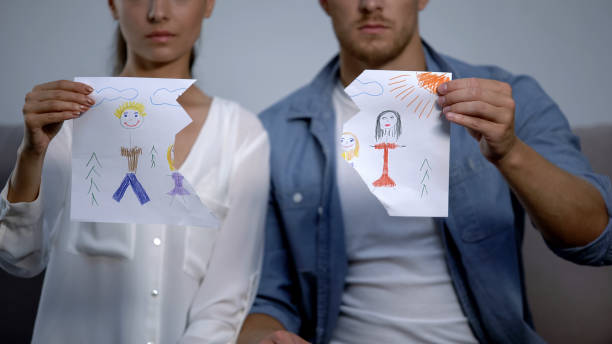In this article on Family Law Act de facto relationship, we go over Subdivision D under Division 1 of Part VII of the Act. Part VII deals with all matters in relation to children. Moreover, Division 1 under Part VII is related to all introductory Sections of the Part. We will explore 4 Sections in the blog, namely, Section 60EA, 60F, 60G and 60H. They are all related to children and de facto relationships.
Section 60EA: Family Law Act De Facto Relationship Definition
Firstly, let’s explore the definition of Family Law Act de facto partner. According to the Act, a person is a de facto partner if:
- they have registered their relationship with the other person (including for same-sex relationships) under the State or Territory, or
- the person is in a de facto relationship with the other person.
The term ‘de facto’ itself means ‘in fact.’ Furthermore, there is a need for two parties to live in a “genuine domestic basis” if they are to be each other’s de facto partners. Moreover, pertaining to the first point of “registering the relationship” mentioned above under Family Law Act de facto partner, in NSW, parties can register their relationship here.
Section 60F: Certain Children Are Children of Marriage
Firstly, according to Section 60F, for the purposes of this Section, a child is a child of a marriage if:
- the child is the child of both parties to the marriage, whether born before or after the marriage, or
- both parties to the marriage adopt the child after the marriage, or with the consent of the other
Secondly, a reference to a child of a marriage in this Act includes a reference to a child if:
- parties have terminated a marriage through divorce or annulment (in Australia or elsewhere), or
- the death of one party to the marriage has resulted in the termination of the marriage
Thirdly, a child ceases being a child of a marriage when a person who adopts the child is not a prescribed adopting parent before the adoption.
Who is a prescribed adopting parent? In relation to a child, this can be either a parent of the child, or a spouse ( or de facto partner) of a person who is the parent of the child, or a parent of the child and his/her spouse or de facto partner.
Fourthly, the Section states that the following provisions apply in relation to a child of a marriage whom a prescribed adopting parent has adopted.
- If a Court granted leave under Section 60G for the adoption proceedings to be commenced – the child ceases to be a child of the marriage for the purposes of this Act.
- In any other case – the child continues to be a child of the marriage for the purposes of this Act.
What is Section 60G about? Read on to find out.

Section 60G: Leave Granted for Adoption Proceedings
This Section is related to adoption of child. This may be relevant for partners who are married or who are classified as Family Law Act de facto partners. Section 60G states that leave may be granted for adoption proceedings by prescribed adopting parent:
- The Supreme Court of the Northern Territory, the Federal Circuit and Family Court of Australia, or Family Court of the State may grant leave for proceedings to be commenced for a prescribed adopting parent to adopt a child.
- Moreover, the court must consider if granting leave would be in the child’s best interests
Section 60H: Children Born As a Result Of Artificial Conception Procedures
This Section discusses the topic of children born as a result of artificial conception procedures. What are artificial conception procedures? According the Act, artificial conception includes artificial insemination and the implantation of an embryo in the body of a woman.
The Section states that if:
- a child is born to a woman as a result of an artificial conception procedure while the woman was married to a person, or was the de facto partner of a person (the other indented parent), and
- either
- 1. the woman and the other intended parent consented to the procedure, and any other person providing genetic material consented to the procedure, or
- 2. under a prescribed law of the Commonwealth or of a State or Territory the child is a child of the woman and the other intended parent
Then for the purposes of this Act:
- The child is the child of the woman and the other intended parent, and
- If a person other than the woman or intended parent provided genetic material – the child is not the child of that person
Secondly, if a child is born to a woman as a result of the carrying out of an artificial conception procedure, and under a prescribed law of the Commonwealth or of State/Territory, the child is the child of the woman:
- Then the child is her child for the purposes of his Act regardless of whether the child is the woman’s biological child or not
Thirdly, if a child is born to a woman as a result of an artificial conception procedure, and under a prescribed law of the Commonwealth or of State/Territory, the child is the child of a man, then: The child is the child of the man regardless of whether or not he/she is the biological child of the man.

Obtain Legal Advice from Family Lawyers
The legislation on family law can be complex. Each matter is unique and different areas of the Act may be applicable for different circumstances. Therefore, for your individual circumstance, it is important for you to seek legal advice that is necessary for your unique requirements.
For more information on Family Law Act de facto relationships, check out other blogs on our website. Moreover, in case of any enquiries, you can contact our team of experienced solicitors to gain high-quality legal advice.
Reach out to our team of lawyers for legal solutions, or for more questions on Family Law Act de facto relationships.
